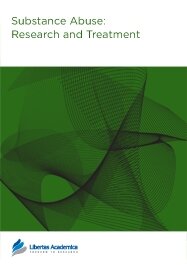

Publication Date: 14 Mar 2011
Type: Rapid Communication
Journal: Substance Abuse: Research and Treatment
Citation: Substance Abuse: Research and Treatment 2011:5 11-15
doi: 10.4137/SART.S6174

Background: It has been almost three decades since tramadol was introduced to the market as a centrally acting analgesic. It is claimed to have weak opioid properties and a low dependence potential in opioid-addicted patients. This study was designed to investigate the suspicion of potential tramadol abuse among patients visiting pharmacies in Babol, one of the major cities in northern Iran.
Methods: Under supervision by pharmacists, a questionnaire designed to monitor drug abuse was filled out for every patient who requested tramadol from Babol’s pharmacies during 6 months (Aug. 2007 till Feb. 2008). The data obtained were used to derive descriptive statistics and to make a comparison with results from other countries.
Results: Of 162 patients (or someone on their behalf) who had sought tramadol from a pharmacy, 92 (56%) patients did not have a prescription. At least 103 (64%) patients reported criteria for addiction (ie, for feeling of psychological well being, unable to cease taking the drug, more than two weeks of tramadol use). In total, 145 (89%) patients were aged younger than 30 years, and 90 (55%) patients were aged younger than 18 years. More than 63% of patients reported a history of addiction or drug abuse. Most of the patients with no prescription (88%) had abuse/addiction criteria.
Conclusion: Patients who request tramadol from pharmacies in Babol seem to have a high potential for drug abuse, in particular those who do not have prescriptions. The high prevalence of people under 18 years of age seeking tramadol could be a worldwide trend. We recommend further governmental support for pharmacies to deal with tramadol abusers in northern Iran.
PDF (489.12 KB PDF FORMAT)
RIS citation (ENDNOTE, REFERENCE MANAGER, PROCITE, REFWORKS)
BibTex citation (BIBDESK, LATEX)
XML
PMC HTML

I very much enjoyed the experience of publishing with Substance Abuse: Research and Treatment. The editorial and review staff were very helpful and understanding throughout, even when a very large and complex project was being undertaken, and a range of subjects had to be reviewed. The editor was sympathetic and understanding of the author's responses, and this combined and coordinated interplay has allowed major conceptual advances to be made with major implications for the improvement ...
Facebook Google+ Twitter
Pinterest Tumblr YouTube